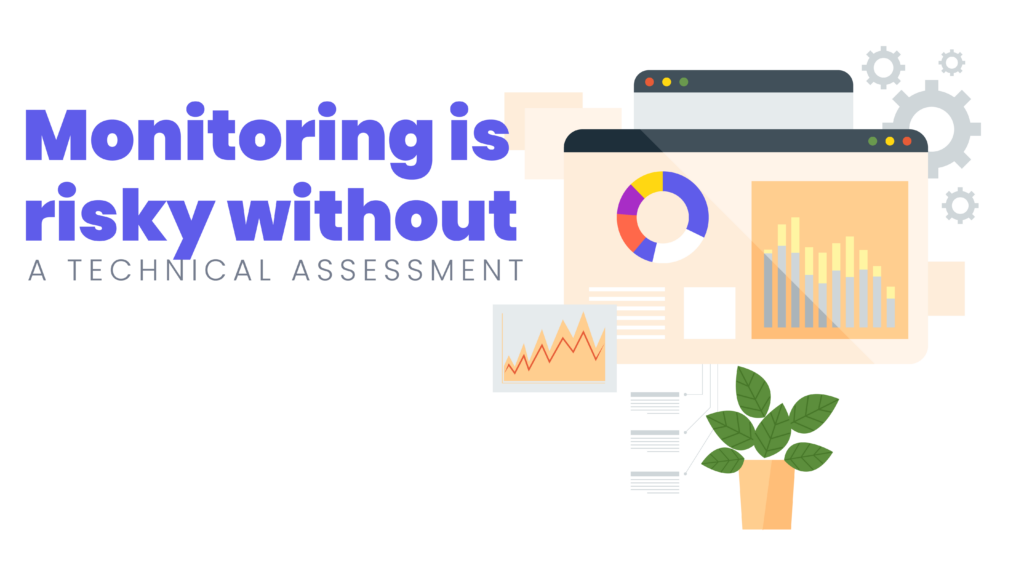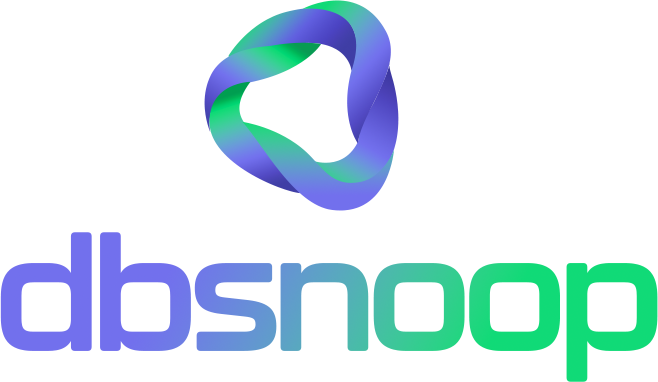

In the world of IT management, there is a dangerous confusion between two fundamentally different concepts: monitoring and assessment. Many organizations believe that because they have real-time dashboards and an alerting system, they have a complete understanding of the health of their databases. This is a risky assumption.
Monitoring is tactical and reactive; it tells you what is happening now. An assessment is strategic and proactive; it reveals the underlying condition and future risks. Without the depth of a periodic technical assessment, continuous monitoring can, paradoxically, create a false sense of security. It normalizes subtle deviations and masks chronic diseases until they manifest as a critical and costly incident.
This article details the technical limitations inherent in isolated monitoring, defines the crucial role of an assessment, and explains how dbsnOOp’s technology integrates continuous surveillance with the intelligence of a deep diagnosis.
Defining the Roles: Continuous Monitoring vs. Technical Assessment
To understand the risk, we first need to define the terms with technical precision.
The Role of Continuous Monitoring
Monitoring is the process of continuous, real-time observation of a system. Its main objective is tactical situational awareness.
- Focus: Performance metrics (CPU, memory, I/O), uptime, application latency, and compliance with Service Level Objectives (SLOs).
- Question it Answers: “Is the system operating within expected parameters right now?”
- Methodology: Collection of time-series data and alerts based on predefined thresholds.
- Analogy: The car’s dashboard (speedometer, engine temperature, fuel level).
The Role of a Technical Assessment
An assessment is a deep, one-time diagnostic project. Its objective is the strategic analysis of the system’s health and risks.
- Focus: Architecture configuration, SQL code efficiency, index health, security compliance, root cause analysis of chronic problems, and capacity planning.
- Question it Answers: “What is the fundamental condition of our database, and what are the accumulated risks that threaten its future performance and scalability?”
- Methodology: Collection of high-granularity data over a representative period, correlation analysis, configuration auditing, and execution plan analysis.
- Analogy: The full service at the dealership (engine diagnostics, chassis inspection, electrical system analysis).
The risk is not in using monitoring, but in believing that it replaces the need for an assessment.
The Blind Spots of Monitoring: The Risks Your Dashboards Don’t Show
Relying solely on monitoring leaves the organization vulnerable to a series of chronic problems that develop silently.
Blind Spot 1: The Normalization of Deviation and Silent Degradation
This is the most insidious risk. Teams get used to the “normal” presented on the dashboards. If the average latency of a transaction was 100ms six months ago and today it is 180ms, daily monitoring does not trigger an alarm. The degradation was so gradual that the new, worse performance has become the “new normal.” The system is objectively sicker, but the instruments have adapted to this new reality. This happens because traditional monitoring is not designed for long-term degradation trend analysis.
Blind Spot 2: Accumulated Technical Debt in SQL Code
Monitoring tells you that the database is using a lot of CPU, but it doesn’t tell you why. The root cause, most of the time, is technical debt: queries that were never optimized and that have become exponentially more expensive as the data volume grew. A query that does a full table scan on a 1GB table might be acceptable. The same query on a 100GB table is a denial of service waiting to happen. Monitoring doesn’t audit the quality of the code; it only measures the symptoms of bad code.
Blind Spot 3: Configuration Drift and Security Risks
A database’s configuration is not static. Changes are made, patches are applied, and new parameters are introduced. Without a periodic audit, “configuration drift” is inevitable—the state of the database slowly deviates from best practices or the original configuration. A memory allocation parameter may have been changed for a specific task and never reverted, causing inefficient resource consumption.
Similarly, security permissions can become overly permissive over time. Performance monitoring is completely blind to these configuration and security risks.

Blind Spot 4: Cost Inefficiency and Resource Waste in the Cloud
Your monitor may show that CPU utilization is at a healthy 60%, but that doesn’t mean the usage is efficient. The system might be using 60% of an AWS m5.8xlarge instance to perform work that, if optimized, could run at 70% of an m5.2xlarge instance, resulting in massive savings. Monitoring measures consumption; it does not qualify the efficiency of that consumption. It does not reveal the financial waste caused by suboptimal queries and configurations.
The Role of the Assessment: From Diagnosis to Optimization Strategy
A technical assessment fills exactly the blind spots left by monitoring.
- Establishes an Objective Health Baseline: Instead of relying on the subjective perception of “normal,” an assessment creates a quantitative and detailed baseline of the current performance. It measures the real cost of the main business transactions and serves as a reference point for all future optimizations.
- Reveals the Root Cause of Chronic Problems: By performing a deep analysis of wait events, execution plans, and configuration, the assessment goes beyond the symptoms and points to the fundamental cause of slowness or instability.
- Produces a Prioritized Optimization Roadmap: The most valuable result of an assessment is not the diagnosis, but the treatment plan. It delivers a list of corrective actions (e.g., “Create index X,” “Rewrite query Y”), prioritized by their expected impact, providing a clear roadmap for the IT team.
- Validates the Architecture for Future Scalability: The assessment evaluates whether the current data architecture is prepared to support the future growth of the business, identifying architectural bottlenecks that need to be addressed.
dbsnOOp: Integrating Continuous Surveillance with the Intelligence of an Assessment
The dbsnOOp philosophy recognizes that, in an ideal world, the intelligence of an assessment should not be a one-time event, but a continuous process. The platform was designed to merge the real-time surveillance of monitoring with the diagnostic depth of an assessment.
AI-Powered Baselines as a “Continuous Assessment”
The Autonomous DBA from dbsnOOp overcomes the “normalization of deviation.” By continuously learning the system’s behavioral patterns, the AI effectively performs a mini-assessment every minute. It compares the current performance not with a static threshold, but with a contextual and historical baseline. This allows it to detect the silent degradation of a query as an anomaly, treating technical debt as an active risk to be managed.
Top-Down Diagnosis: The Depth of an Assessment, the Speed of Real-Time
The Top-Down Diagnosis functionality is the embodiment of the fusion of these two worlds. It provides the depth of an assessment—correlating infrastructure symptoms with the root cause at the SQL code level—but with the speed of real-time monitoring. When a problem occurs, there is no need to start an assessment project. The root cause analysis, which would take days in a manual process, is delivered in seconds.
AI-Powered Tuning: The Automatically Generated Optimization Roadmap
The AI-Powered Tuning functionality transforms monitoring into a proactive tool. It continuously analyzes the execution plans of the most expensive queries and, just as a DBA would in an assessment, generates recommendations for creating indexes and optimizing code. The platform doesn’t just inform you that there is a problem; it provides the action plan to solve it.
The dbsnOOp Health Check as an “On-Demand” Assessment
For companies that need a starting point, the dbsnOOp Health Check service encapsulates the platform’s power in a one-time, accelerated assessment. In 24 hours, it delivers the same level of depth and the same optimization roadmap as a weeks-long manual assessment, establishing the health baseline and identifying the highest-impact “quick wins.”
Conclusion: A Two-Layered Strategy for Resilience
Relying solely on monitoring leaves your company exposed to chronic and silent risks. Monitoring without the intelligence of an assessment is just an alarm system. An assessment without the follow-up of continuous monitoring is just a photograph that quickly becomes outdated.
True resilience comes from a two-layered strategy: the tactical and continuous surveillance of monitoring, enriched and validated by the strategic depth of a technical assessment. dbsnOOp was designed to be the platform that unites these two worlds, ensuring that you not only know what is happening with your data asset now but also have the intelligence to protect its health and performance in the future.
Want to solve this challenge intelligently? Schedule a meeting with our specialist or watch a live demo!
Schedule a demo here.
Learn more about dbsnOOp!
Learn about database monitoring with advanced tools here.
Visit our YouTube channel to learn about the platform and watch tutorials.

Recommended Reading
- Banks and Fintechs: How AI Detects Fraud Before It Happens: This article perfectly illustrates the concept of going beyond superficial monitoring. Fraud detection is not based on simple alerts but on the analysis of complex patterns, just like a deep assessment. It shows why high-value systems, like those in fintechs, require the intelligence of an assessment, not just the alert of a monitor.
- AI in Retail: How to Forecast Demand and Reduce Dead Stock: Forecasting demand in retail requires a deep analysis of data, not just the monitoring of daily sales. This post serves as a business analogy for the need for a technical assessment: to make strategic decisions (whether about inventory or IT architecture), you need to go beyond real-time metrics and perform a deeper analysis.
- Industry 4.0 and AI: The Database Performance Challenge and the Importance of Observability: In industry, a piece of equipment may seem “normal” on a monitor, but a deeper analysis (assessment) can reveal wear and tear that will lead to a failure. This article on Industry 4.0 highlights the need for deep observability to prevent stoppages, reinforcing the argument that monitoring alone is insufficient to ensure the resilience of critical systems.

